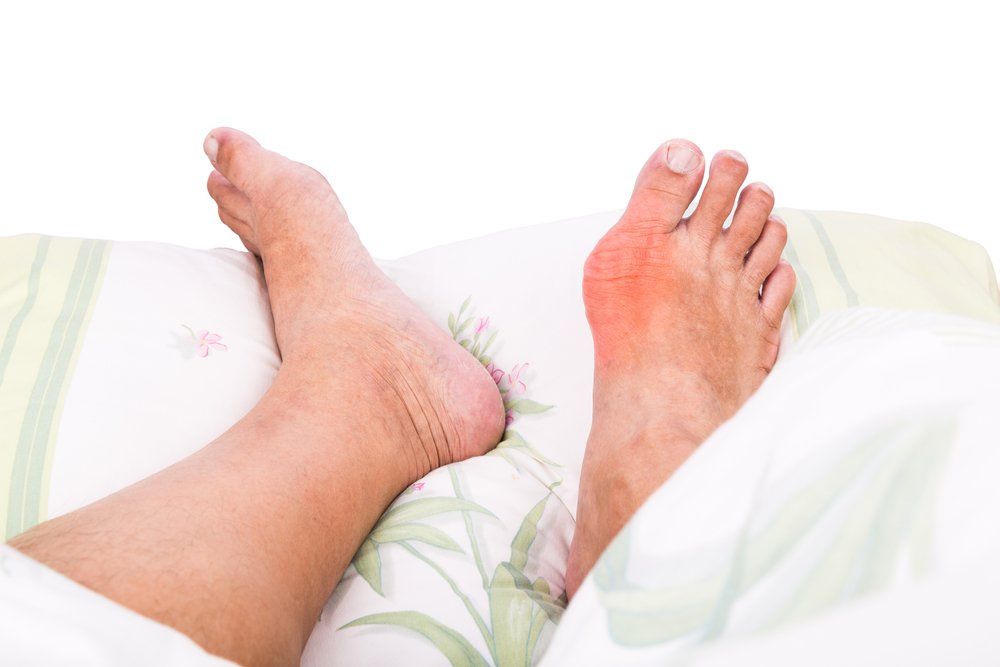Article
Obesity, Hypertension, and Diuretic Use Double the Risk of Gout
Identifying populations at risk may provide opportunities for primary prevention.
Image credit: ©ThamKC/Shutterstock.com

Obesity, hypertension, and diuretic use more than double the risk of incident gout, according to a recent British study.
Background
Gout affects 2.5% of adults in the UK, with prevalence and incidence continuing to rise. Though the magnitude of the risk varies between studies, body mass index (BMI) and hypertension have previously been identified as risk factors for incident gout in a large number of epidemiological studies. Diuretics raise serum uric acid levels and are perhaps the most well-known medications to be associated with gout; however, it has been proposed that the observed risk results from comorbidities rather than diuretic use alone. Treatment of gout remains suboptimal; thus, identifying populations at risk may provide opportunities for primary prevention.
Led by Peter L. Evans of the Research Institute for Primary Care and Health Sciences at Keele University in Staffordshire, UK, and published in Arthritis Research & Therapy, this systematic review of cohort studies aimed to derive pooled estimates of the risk of incident gout associated with obesity, hypertension, and diuretic use.1
The study
Researchers searched MEDLINE, Embase, CINAHL, and the Cochrane Library from their inception to March 2017 for cohort studies, prospective or retrospective, and undertaken in primary care or the general population, focusing on adults aged 18 years or older. Articles were required to have examined at least one of the following: obesity (BMI 30 ≥ kg/m2), hypertension (self-reported, physician-diagnosed, or study-defined mm Hg value), or diuretic use (self-reported or reported in records) and their association with incident gout, defined as the first recorded episode (ie, a subsequent new diagnosis of gout).
The search yielded 6317 individual publications, of which 14 met the inclusion criteria and 11 contained data suitable for pooling in the meta-analysis. The majority of studies originated in the US, with the remaining four articles from the UK, Singapore, Taiwan, and Tokelau (South Pacific island).
The findings
For obesity, four articles met the inclusion criteria, all of which were suitable for pooling and provided the relative risk of incident gout. Gout was 2.24 times more likely to occur in individuals with BMI 30 ≥ kg/m2.
Ten articles met the inclusion criteria for hypertension, with four providing hazard ratios and five providing relative risk that were suitable for pooling. Individuals with hypertension were 1.64 and 2.11 times more likely to develop gout as normotensive individuals (adjusted hazard ratio and relative risk, respectively).
Three of the six articles that met the inclusion criteria for diuretic use were suitable for inclusion in the meta-analysis. The use of diuretics was associated with almost 2.5 times the risk of gout compared with no diuretic use.
Implications for physicians
One potential limitation of this study is that some articles reviewed used specific samples (eg, health professionals, university students), meaning their sampling frames with lower social deprivation are likely to underestimate the risk of incident gout. Other limitations include that one-quarter of the articles did not specifically indicate that they had excluded individuals with a previous diagnosis of gout and that variation may exist between pooled multivariate relative risks because of adjustments for different factors within different studies.
“Obesity, hypertension, and diuretic use are all risk factors for incident gout, independent of one another and each more than doubling the risk of developing gout compared with those without these conditions,” the researchers conclude. The researchers thus advise clinicians to recognize patients meeting these criteria to be at greater risk for developing gout. These patients should be provided with appropriate treatment options. The researchers also recommend additional research into interactions between these individual risk factors to expand our understanding of the epidemiology and pathophysiology of gout.
References:
1. Evans PL, Prior JA, Belcher J, et al. Obesity, hypertension and diuretic use as risk factors for incident gout: a systematic review and meta-analysis of cohort studies. Arthritis Res Ther. Published online July 5, 2018. DOI: 10.1186/s13075-018-1612-1.




